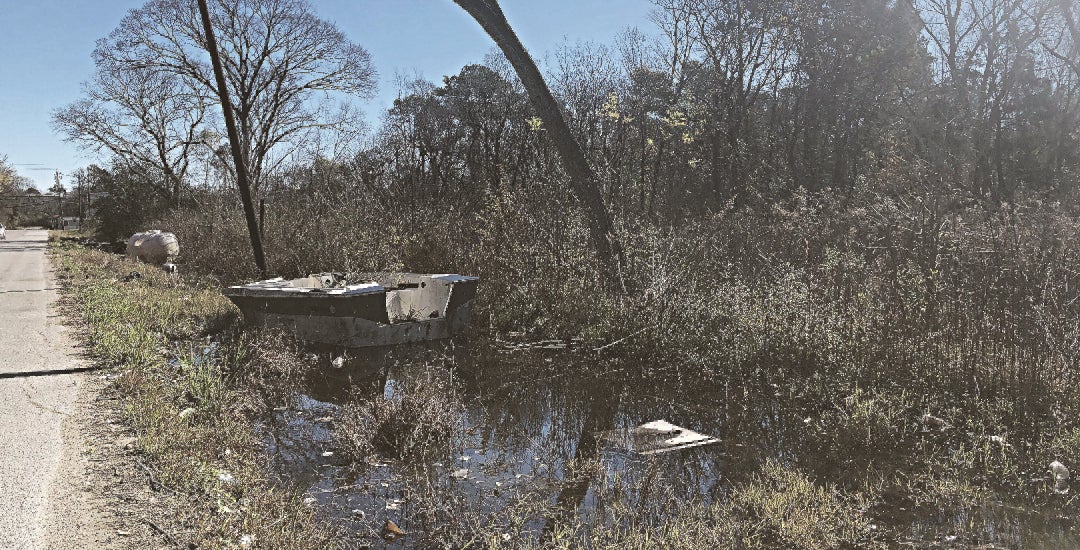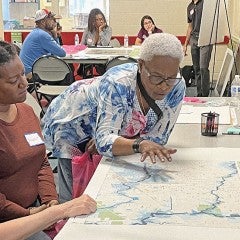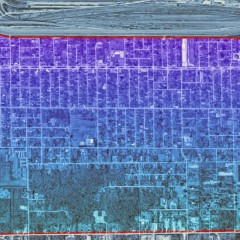The Community Action Plan for Health Equity in Settegast is the culmination of a grant awarded by the Urban Land Institute’s Building Healthy Places Initiative to ULI Houston. In addition to Harris County Public Health and ULI Houston, other partners were the Houston Land Bank and the Kinder Institute for Urban Research.
The document addresses seven key themes: access to goods and services; community organizing and capacity building; education and employment; environmental health; housing and land use; mobility, health and safety; and parks and recreation. It highlights existing resources and encourages new partnerships that could alleviate the variety of hurdles facing Settegast.
The proposal is intended to be a living document that can be adjusted to meet the needs of the community as they evolve. The timeframes of the suggested actions range from short-term (three years or less to complete), medium-term (three to five years) and long-term projects (at least six years).
The plan was authored by the Harris County Public Health Built Environment Unit, which includes Elizabeth Van Horn, Parul Pillai, Carolyn White and Aimee Schultze. Also key to the initiative was Kyle Maronie, resident and active community member of Settegast, who co-led community engagement and provided feedback and guidance from neighborhood residents throughout the project.
“This is another tool in the advocacy toolkit centering the stories and the experiences of the residents of the neighborhood,” Maronie said. “The plan, in my opinion, is something that can help us better advocate for the things that we as residents in the neighborhood rightly deserve. I believe this is a plan that speaks to what needs to be done, and it can push us into the future. I’m very excited to continue to support the implementation of the items that have been laid out in this plan.”
To assist in the expansion of affordable, healthy food options, the analysis encourages increasing access to local community gardens, connecting residents to existing farmers markets, expanding delivery options for groceries and meals and creating a detailed northeast Houston food resource map.
Possible solutions to create more capacity in Settegast include the BeSuccessful Initiative, introduced by District B Houston City Council Member Tarsha Jackson last September. The report also discusses working with organizations with experience in grant writing, and creating programming to foster interaction between young adults and new residents to engage with neighborhood groups.
Ideas for improving educational and employment support in Settegast focus on after-school programs and mentorship for students, but the report also emphasizes increasing opportunities for people across multiple age groups through better access to jobs and workforce training. Introducing financial literacy curriculum in high schools and teaching youth how to engage in community development are listed as ways to enhance public school resources and funds. The plan also recommends business development through training, advising and funding opportunities for residents and small business owners.
Photo courtesy Harris County Public Health
The area has become a frequent site for illegal dumping, with trash and other hazardous materials impacting an already faulty drainage infrastructure and neglected vacant lots. The Kinder Institute found that nearly 1,000 homes in Settegast were impacted by Hurricane Harvey, and residents said flooding was among their top concerns for the neighborhood. Flood mitigation strategies outlined in the report include advocacy for government entities to maintain ditch and stormwater infrastructure, and hosting community cleanups in the lead-up to a forecasted severe weather event.
Land use within the neighborhood or nearby — such as the Union Pacific Railroad intermodal terminal, the McCarty Road Landfill and the Ralston Road Landfill — is also a top concern. The plan recommends air quality monitoring, limiting the growth of trucking and manufacturing lots, and implementing or enforcing preservation and development restrictions, existing deed restrictions and conservation districts and strict 18-wheeler parking regulations.
The neighborhood is not walkable: The report indicates that 46% of Settegast does not have sidewalks on both sides of the street, 42% of streets have sidewalks only on one side and 47% of sidewalks need repairs. Pedestrian infrastructure improvements could be facilitated by residents applying for the Mayor’s Office for People With Disabilities’ Sidewalk Program, or through other local or federal funding sources.
The neighborhood was described as “rurban,” a combination of rural and urban, in a 2008 analysis by the Rice Design Alliance, as some households have chickens and horses on their premises. Parts of the neighborhood have forestry and greenery that could be potential new park locations in addition to the Hobart Taylor Park and Community Center, which serves as a popular gathering place.
Maronie said early feedback on the action plan has been positive. Instituting its proposals could usher in a new and productive era of action and engagement in Settegast, with the responsibility shared between government agencies, nonprofit organizations, public health professionals and residents, he said.
“It’s one thing to be pleased with what’s written out on paper, and another to begin the hard and arduous process of implementation,” Maronie said. “Of course, this is all incremental — it’s not going to happen overnight. But this is a model and an example of how any planned development for any community should be done.
“It’s very important to not have people be included after the fact or after the plan is developed. This was a very unique experience that can serve as a model and a beacon of what can be done when you include community at the very forefront of any effort.”



